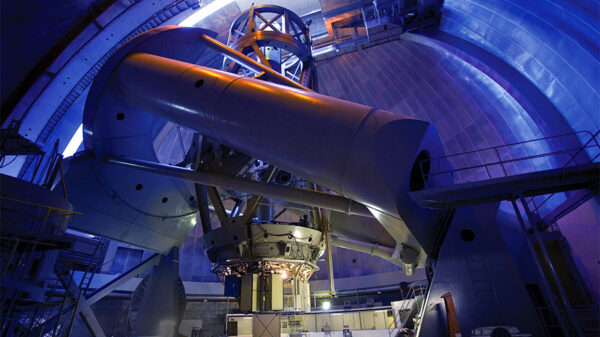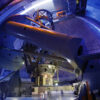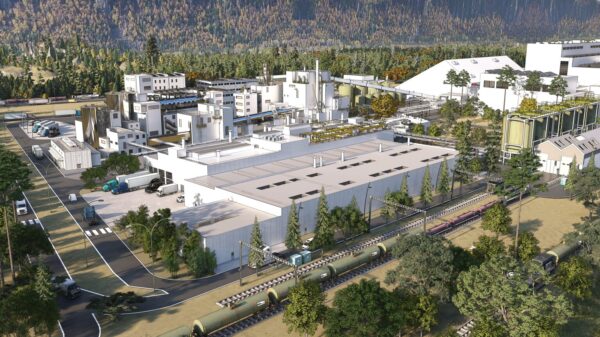Engineers from the University of Illinois Chicago report that they have updated a green ammonia production process using lithium, nitrogen and hydrogen atoms that could be a gamer changer for climate change efforts.
In a paper published last month in the academic journal ACS Applied Materials & Interfaces, scientists highlighted that ammonia stands as the second-largest source of carbon emissions after cement. This fact is attributed to the high temperatures and substantial energy requirements of its production process.
However, the process covered in the paper merges nitrogen gas with a hydrogen-donating fluid like ethanol and a charged lithium electrode. Instead of breaking apart nitrogen gas molecules with high temperature and pressure, nitrogen atoms adhere to the lithium and then merge with hydrogen to form the ammonia molecule.
The group calls the new technique lithium-mediated ammonia synthesis. It operates at low temperatures and is regenerative, replenishing the original materials with each ammonia production cycle.
“There are two loops that happen. One is the regeneration of the hydrogen source and the second is the regeneration of the lithium,” Meenesh Singh, the project’s head researcher, said.
“There is a symphony in this reaction, due to the cyclic process. What we did was understand this symphony in a better way and try to modulate it in a very efficient way, so that we can create a resonance and make it move faster.”
Singh’s lab has produced the latest innovation in the pursuit of cleaner, green ammonia with this process.
Read more: Lithium South Development expands production goals, updates PEA on Hombre Muerto lithium project
Read more: Lithium South Development updates leadership roster, appoints new director
Green breakthrough builds on a previously known reaction
Before this, his group devised methods to synthesize the chemical using sunlight and wastewater and constructed an electrified copper mesh screen to decrease the energy required to produce green ammonia. Their most recent breakthrough builds upon a reaction that scientists have known for nearly a century.
“The lithium-based approach can actually be found in any organic chemistry textbook. It’s very well-known” Singh said. “But making this cycle run efficiently and selectively enough to meet economically feasible targets was our contribution.”
The aim is for high energy efficiency and low cost. Scaling up this process could reduce the production cost of ammonia to approximately $450 per ton, making it 60 per cent cheaper than previous lithium-based methods and other green proposals.
However, achieving selectivity remains important, as many efforts to purify ammonia production have inadvertently produced large amounts of unwanted hydrogen gas. The group’s findings stand out as some of the first to reach the selectivity and energy consumption standards the Department of Energy has set for industrial-scale ammonia production.
The researcher also mentioned that operating the process in a modular reactor could become even more environmentally friendly by using electricity generated from solar panels or other renewable sources and by supplying the reaction with air and water.
The technique has other uses as well, including potentially using hydrogen as fuel.
Read more: Lithium South Development updates leadership roster, appoints new director
A new demand source for lithium
Hydrogen fuel represents a promising path toward clean energy, offering a sustainable alternative to fossil fuels. When used in fuel cells, hydrogen produces electricity through a chemical reaction with oxygen, emitting only water vapour and heat as byproducts, making it an environmentally friendly option.
The new green energy technique could also lead to positive downstream effects for lithium production and its adherents.
Lately, however, the commodity price has taken a bit of a tumble, declining substantially over the past few months on the back of decreasing demand for electric vehicles.
Where companies like Sociedad Química y Minera de Chile (SQM) (NYSE: SQM), Lithium South Development Corporation (TSXV: LIS) (OTCQB: LISMF) (Frankfurt: OGPQ) and Pohang Iron and Steel Company (POSCO) (KRX: 005490) have leaned into the supply glut by continuing production, other companies have backed off.
The new way of making ammonia with lithium could lead to more need for lithium and renewable energy like solar or wind power. It could also make industries that use ammonia, like farming, medicine, and clean energy, want more of it because it’s cheaper and better for the environment.
Lithium South Development Corporation is a sponsor of Mugglehead News Coverage
.
Follow Joseph Morton on Twitter
joseph@mugglehead.com














